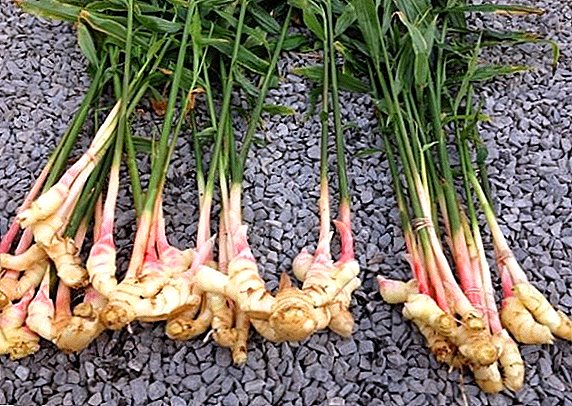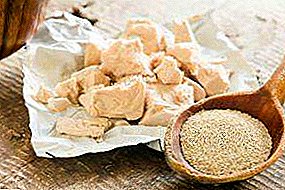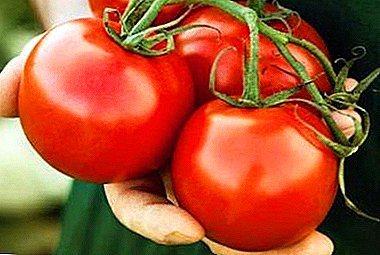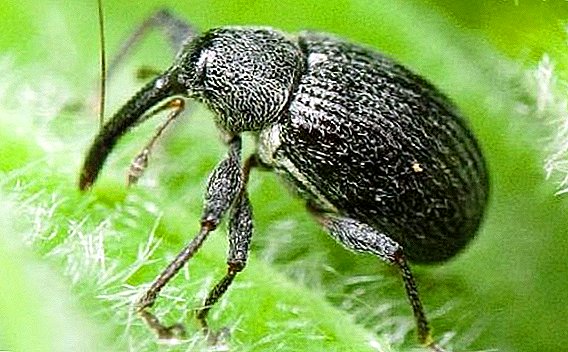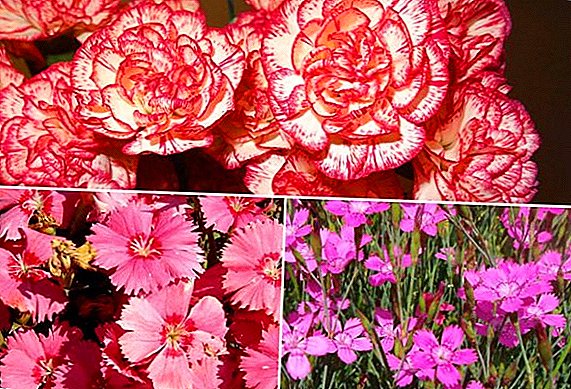 Carnation is one of the most popular flowers used for cutting into bouquets. It is grown in open ground and in greenhouses. Wild and garden flowers usually rarely get sick of various kinds of diseases. You can not say about greenhouse plants, which are often affected by bacteria, fungi, viruses. In this article, we have selected for you a description of methods for the prevention and treatment of the most common diseases of cloves.
Carnation is one of the most popular flowers used for cutting into bouquets. It is grown in open ground and in greenhouses. Wild and garden flowers usually rarely get sick of various kinds of diseases. You can not say about greenhouse plants, which are often affected by bacteria, fungi, viruses. In this article, we have selected for you a description of methods for the prevention and treatment of the most common diseases of cloves.
Alternaria
Symptoms of Alternaria, which is caused by a pathogenic fungus, are round or oblong spots along the main vein of the leaf. Later, they appear black with an olive tint. Similar spots girdle and stem, provoking its withering. The leaves curl and dry.
 The fungus of disease spreads through infected plants and plant debris. A favorable factor for its reproduction is excessive moisture. The disease usually develops in warm weather with heavy rainfall.
The fungus of disease spreads through infected plants and plant debris. A favorable factor for its reproduction is excessive moisture. The disease usually develops in warm weather with heavy rainfall.
Among the varieties of cloves that are most susceptible to Alternaria, it is necessary to mention "Shabo". Wild and cultivated flowers are generally resistant to the disease.
Prevention measures. In order to prevent the damage of carnations by Alternaria, it is necessary to try to grow strong, healthy plants. To do this, they need to be fed with fertilizers containing potassium and phosphorus. Excessive soil moisture should not be tolerated; good drainage should be ensured during planting so that rainwater does not stagnate. Care should be taken to make nitrogen supplements, since their excess may also contribute to the development of the disease. You should not grow carnations, especially Shabo, on one site for more than two years in a row. For planting use seeds only healthy flowers.
Control measures. If you identify symptoms of Alternaria, the diseased plants are destroyed. Then spraying is carried out several times with 1% Bordeaux liquid, 0.25% solution of copper oxychloride or other preparations (Chom, Ridomil Gold) with an interval of 10-15 days.
If you use questionable seed for planting, treat it with fungicides or heat it at 50 ºС for 15 minutes.
Ascohitosis cloves
 Another fungal disease of cloves is ascochytosis. It manifests itself as gray spots with a dark rim, in which later black or dark brown sclerotia are formed in the form of small dots.
Another fungal disease of cloves is ascochytosis. It manifests itself as gray spots with a dark rim, in which later black or dark brown sclerotia are formed in the form of small dots.
Just like the previous disease, it spreads with diseased plants and plant debris.
Prevention measures. It is necessary to remove and destroy plant residues in the fall. Recommended preventive spraying before the start of flowering Bordeaux mixture or preparations containing copper ("Hom", "Abiga-peak", "Oksikhom, etc.). During the growing season using the tool "Profit".
Control measures. When a disease is found on the cloves, they are removed and destroyed by burning. Unaffected plants are sprayed with Bordeaux liquid or other fungicides.
Did you know? Carnations and tulips have many common diseases and pests. Most often it is the tulips that become carriers of infection on carnations. Therefore, these crops should not be planted in the immediate vicinity.
Bacteriosis
 With the defeat of bacteriosis or bacterial wilt, roots, stems, shoots, leaves of a plant suffer. The disease can develop rapidly - the carnage dies within a month. With the defeat of the root system on it and the root of the neck, growths are formed. Further, carnation is observed rot and death of the roots. The leaves turn gray-green and fade. Another symptom may be the appearance along the central vein of a leaf of chlorotic swellings, when pressed, which releases fluid. 1-2 cm long cracks appear on the stems. Muddy mucus can flow from them. With the defeat of the vascular system of the plant, it becomes pale brown, clogged, which leads to wilting of the flower.
With the defeat of bacteriosis or bacterial wilt, roots, stems, shoots, leaves of a plant suffer. The disease can develop rapidly - the carnage dies within a month. With the defeat of the root system on it and the root of the neck, growths are formed. Further, carnation is observed rot and death of the roots. The leaves turn gray-green and fade. Another symptom may be the appearance along the central vein of a leaf of chlorotic swellings, when pressed, which releases fluid. 1-2 cm long cracks appear on the stems. Muddy mucus can flow from them. With the defeat of the vascular system of the plant, it becomes pale brown, clogged, which leads to wilting of the flower.
Prevention measures. If the carnation is planted with cuttings, only healthy plants are selected for cutting. The same applies to the seeds - they must be taken only in specialized stores or from proven flowers. Before planting, the cuttings of the cuttings are treated in a solution of potassium permanganate. Prophylactic spraying with copper-containing agents, drugs "Gamar", "Fitoflavin" is used.
Control measures. When the first symptoms of bacteriosis appear, the affected plants must be removed from the soil and burned. Ground under the roots watered with fungicides "Alirin-B", "Fitosporin-M", "Planriz" or others.
Botrytis (gray rot)
 Botrytis affects the carnation when the weather is cold and wet for a long time. Also contribute to the development of thickened planting, unventilated premises, an excess of fertilizers with nitrogen.
Botrytis affects the carnation when the weather is cold and wet for a long time. Also contribute to the development of thickened planting, unventilated premises, an excess of fertilizers with nitrogen.
The disease manifests itself on the flowers of carnations with a gray bloom.
Prevention measures. In order to avoid damage to plants by gray mold, greenhouses are well ventilated, which allows to reduce the level of air humidity. In order to prevent the spread of the disease, fungicides are sprayed during protracted precipitation. It is important not to injure plants during loosening or weeding. In the spring and autumn, preventive spraying of copper sulfate is carried out, and during the vegetative period they are treated with "Fundazol".
Control measures. Diseased plants are promptly removed from the ground and destroyed.
Important! The main condition for the successful cultivation of cloves is its proper watering - the plant does not tolerate waterlogging.
Heterosporiosis
 Signs of the fungal disease heterosporia are light brown spots with a dark red rim. Plant organs affected by such stains wither and die over time. Prevention measures. In order to prevent this disease, flowers are sprayed three times at intervals of two weeks with "Nitrafen" (2%), copper chloroxide (0.6-0.8%) and other drugs in the fall and spring. Watered drip method, so that water does not fall on the leaves and flowers.
Signs of the fungal disease heterosporia are light brown spots with a dark red rim. Plant organs affected by such stains wither and die over time. Prevention measures. In order to prevent this disease, flowers are sprayed three times at intervals of two weeks with "Nitrafen" (2%), copper chloroxide (0.6-0.8%) and other drugs in the fall and spring. Watered drip method, so that water does not fall on the leaves and flowers.
Control measures. Sick plants destroy. Carry out treatment Bordeaux liquid, copper oxychloride, "Zinebom."
Spotting
Clove and viral ring spots, a dangerous disease that does not exist, can affect the disease. Its characteristic features are light speckled on leaflets. As the disease progresses, necrotic spots and rings are formed on the leaves of the carnation. The plant inhibits growth, there is a lag in development. The tips of the leaves become wavy, curling down.
Prevention measures. It is necessary to buy planting materials only in well-established specialized stores or farms that are certified for the quality of seedlings. When planting and other plant manipulations, garden tools are subject to processing. It is also necessary to combat pests that are carriers of viruses.
Control measures. None.
Mosaic
 One of the most dangerous diseases for cloves is mosaic. It is characterized by light green spots on the leaves and cups. As the disease progresses, the spots necrotize and fall out, forming through holes. Leaves dry out. Petals of flowers are covered with small light strokes. In the end, the development of the disease causes the death of the plant.
One of the most dangerous diseases for cloves is mosaic. It is characterized by light green spots on the leaves and cups. As the disease progresses, the spots necrotize and fall out, forming through holes. Leaves dry out. Petals of flowers are covered with small light strokes. In the end, the development of the disease causes the death of the plant.
Prevention measures. Compliance with the rules of agricultural engineering - the main condition for the prevention of mosaic. It is especially important to remove weeds that can spread viruses, as well as to deal with sucking pests - carriers of the disease.
Control measures. To date, methods of dealing with viral diseases have not been developed.
Rust
The carnation also suffers from rust, the causative agent of which is a harmful fungus. It affects the leaves, stems and petioles of the plant - they form brown swellings and yellow spots. Stems become brittle, break and shrink.
 Rust develops on plants that grow in conditions of high humidity, suffer from an excess of nitrogen and potassium deficiency. In greenhouses, the disease spreads in the autumn-winter period at a temperature of 18-20 ° C.
Rust develops on plants that grow in conditions of high humidity, suffer from an excess of nitrogen and potassium deficiency. In greenhouses, the disease spreads in the autumn-winter period at a temperature of 18-20 ° C.
Prevention measures. Prevention consists in moderate watering and preventing stagnation of moisture. Recommended foliar fertilizing with the use of potassium nitrate (0.5%). Greenhouses should be aired more often. Landings should not be thickened. It is also important to destroy weeds, which can be intermediate carriers of the fungus-pathogen.
Control measures. Rust treatment is carried out using fungicidal sprays. Bordeaux liquid, "Topaz", "Baktofit", etc. are used. They get rid of diseased plants in a timely manner.
Important! Spraying with fungicides should be carried out in windless, dry, overcast weather, in the early morning or in the evening.
Rhizoctoniosis
 Rhizoctoniosis provokes stem rotting at the root collar. As a result, water and nutrients stop flowing to the aboveground part of the plant. The leaves become light yellow, dry out. The roots are affected by rot.
Rhizoctoniosis provokes stem rotting at the root collar. As a result, water and nutrients stop flowing to the aboveground part of the plant. The leaves become light yellow, dry out. The roots are affected by rot.
Prevention measures. Observance of temperature and humidity regimes recommended for growing cloves. Timely fertilizers and soil loosening - it is necessary to ensure adequate access of oxygen to the roots. Landing should not be done at too great a depth.
Control measures. Treatment of plants and soil with the preparations "Maxim", "Alirin B".
Septoriosis Clove
The fungus pathogen of septoria causes small yellow-brown spots with red-purple edges. As the disease progresses, the mid-spots turn white, die off and fall out, forming holes. Black sclerotia with fungal spores are clearly visible on infected tissues.
Prevention measures. Before flowering sprayings are carried out with means of copper in the composition, as well as "Profit", "Trichodermine". Since the fungus overwinters in the remains of infected plants, in the autumn it is necessary to thoroughly clean the ground under flowerbeds and garden plantings.
Control measures. Apply spray fungicides. Sick plants destroy.
Sclerotinia
If you notice a fluffy bloom on the lower leaves or stems, the plant is likely to succumb to sclerotinia. The disease leads to root rot.
Prevention measures. Observance of humidity and recommended temperatures when growing cloves in greenhouses. Do not forget that the stud does not like flooded soil. It should more often loosen the ground.
Control measures. Treatment with drugs "Alirin B", "Glyocladin", "Maxim".
Tracheomycosis (verticillary wilt)
 The causative agent of tracheomycosis, or verticillary wilt, is a fungus of the genus Verticillium. Infection mainly occurs through the soil. There the fungus enters with the remnants of infected plants. Symptoms of the disease: the lower leaves turn yellow and dry up, the plant fades. The fungus infects the vascular system of the clove.
The causative agent of tracheomycosis, or verticillary wilt, is a fungus of the genus Verticillium. Infection mainly occurs through the soil. There the fungus enters with the remnants of infected plants. Symptoms of the disease: the lower leaves turn yellow and dry up, the plant fades. The fungus infects the vascular system of the clove.
Prevention measures. For the purpose of prevention, it is necessary to observe the proper agricultural practices, alternate planting of crops on the site, fertilize with phosphorus-containing and potash fertilizers.
Control measures. Rejection and destruction of diseased plants. Conducting treatment "Fundazol" (2%), liming the soil.
Fusarium
With fusarium wilt, redness of the stems of the carnation, yellowing and wilting of the leaves, incomplete blooming of the flowers, rotting of the roots and root collar are observed. The fungal pathogen enters the vascular system of the plant and gradually leads to the death of the flower.
The favorable factors for the development of Fusarium are thickened plantings, high temperatures and moist soil with high acidity.
The spores of the pathogenic fungus persist in diseased plants, plant debris and soil.
 Prevention measures. To protect cloves from such a serious disease, it is recommended to mulch the soil with sand or fine gravel. Do not get involved in nitrogen fertilizers, especially ammonia fertilizers and excessive irrigation. But potash-phosphorus supplements for prevention do not interfere.
Prevention measures. To protect cloves from such a serious disease, it is recommended to mulch the soil with sand or fine gravel. Do not get involved in nitrogen fertilizers, especially ammonia fertilizers and excessive irrigation. But potash-phosphorus supplements for prevention do not interfere.
Control measures. The treatment of this disease is almost impossible. Therefore, the main method of struggle will be to prevent the spread of the disease to healthy flowers. In order not to miss the first symptoms of the disease, you need to inspect the plants more often. When sick plants are found, they are dug up and burned. Planting cloves treated with fungicides twice with an interval of 10-15 days. After tillage, it is loosened. Cloves return to the site where there was an outbreak of Fusarium, after three or four years.
Did you know? Planting density of a carnation depends on the period of cultivation of a plant in an open ground and on the amount and intensity of light in a closed one. For example, when growing carnations in the garden for 6-8 months, it is recommended to plant up to 100 bushes per 1 square meter. m. When reducing the landing period increases its density.
Phyllosticosis of carnation
This fungal disease manifests itself in the form of small roundish or oval spots of light gray color with a crimson border. Sick clove leaves turn yellow and dry.
The fungus pathogen lives on the remains of plants.
Prevention measures. Conduct preventive spraying before flowering. They use drugs that contain copper, as well as products "Maxim", "Profit". In the autumn they destroy plant residues.
Control measures. Sick cloves are pulled out and burned.
 Summing up, we note that to prevent the disease is much easier than in the future to apply measures to combat diseases of cloves. If you follow the agrotechnical rules when growing cloves, namely: carry out deep digging, systematic loosening, moderate watering, correct feeding with useful substances, the risk of catching an infection from the plant will be minimal. It is also important not to neglect tips on crop rotation and the use of healthy material for planting. All these measures will allow you to avoid unsafe and expensive procedures for processing chemicals.
Summing up, we note that to prevent the disease is much easier than in the future to apply measures to combat diseases of cloves. If you follow the agrotechnical rules when growing cloves, namely: carry out deep digging, systematic loosening, moderate watering, correct feeding with useful substances, the risk of catching an infection from the plant will be minimal. It is also important not to neglect tips on crop rotation and the use of healthy material for planting. All these measures will allow you to avoid unsafe and expensive procedures for processing chemicals.



